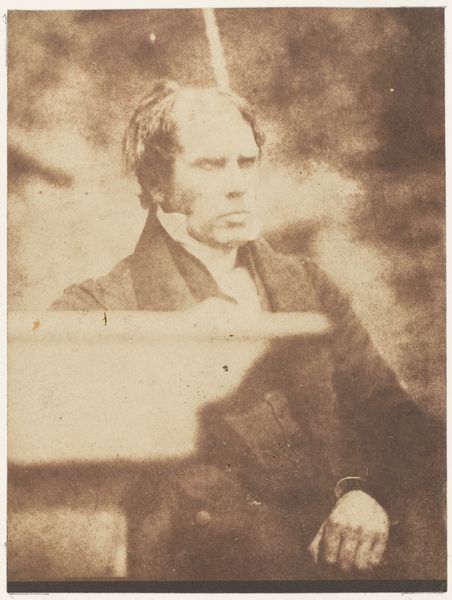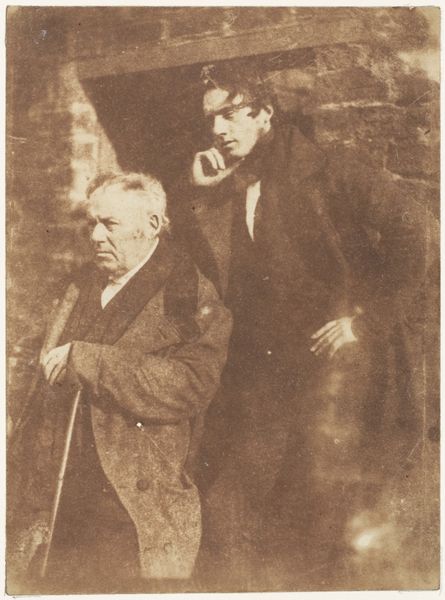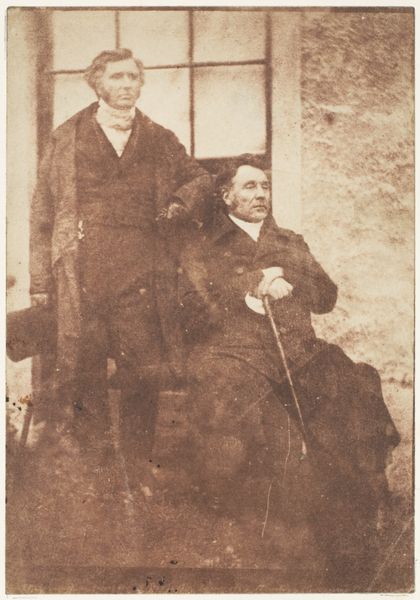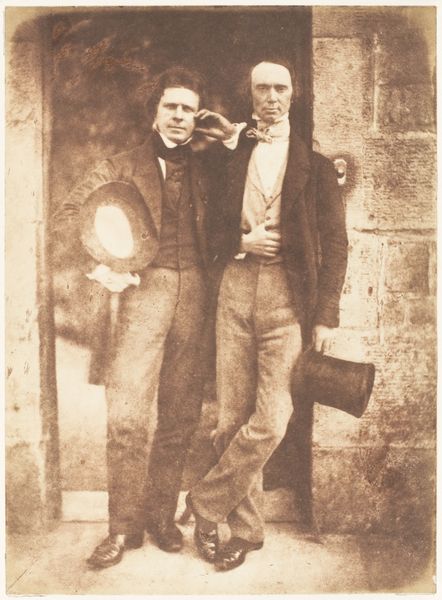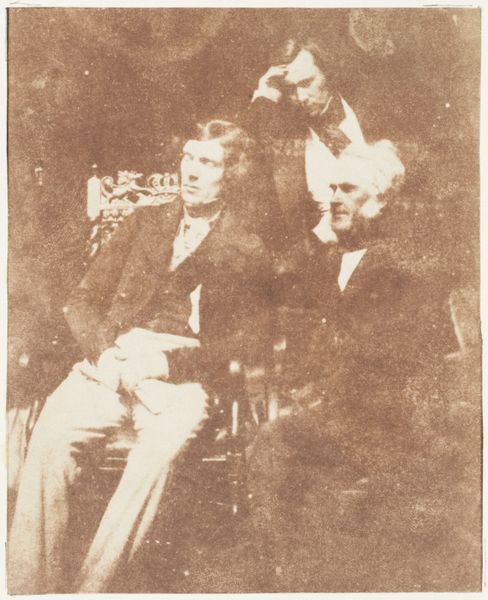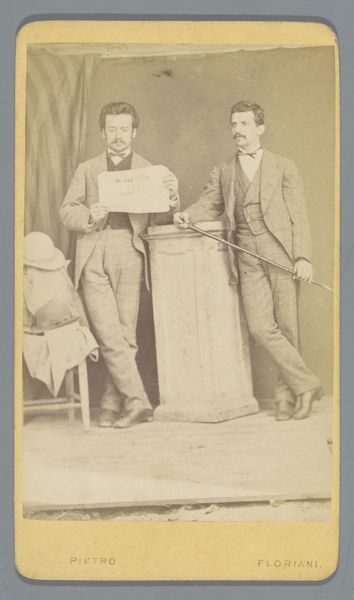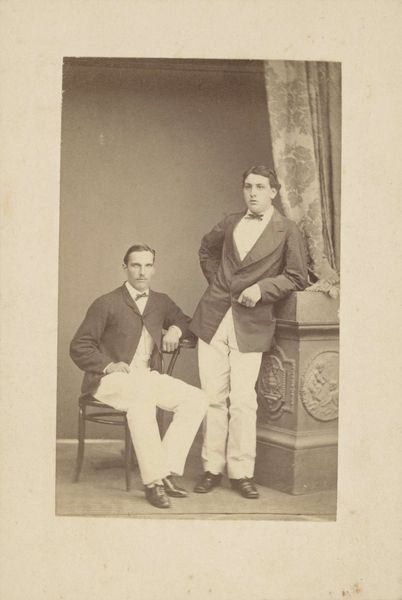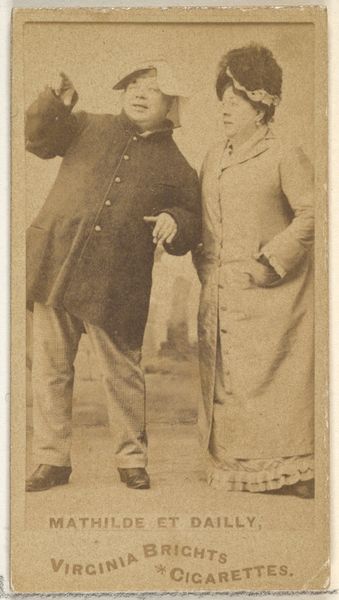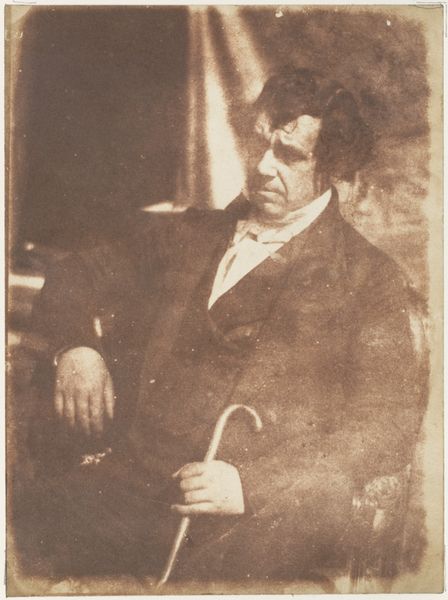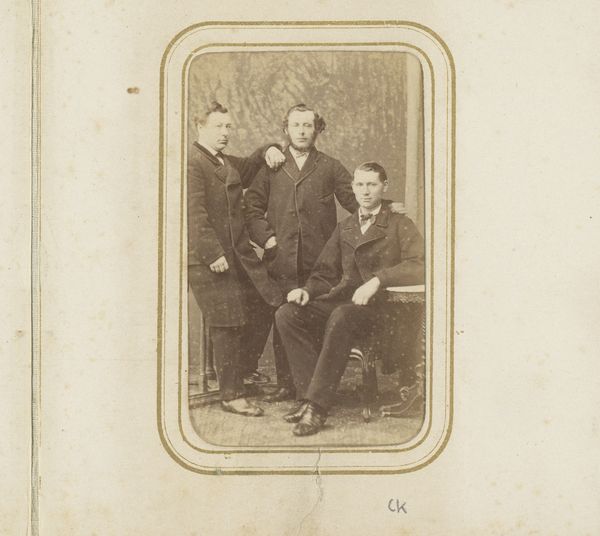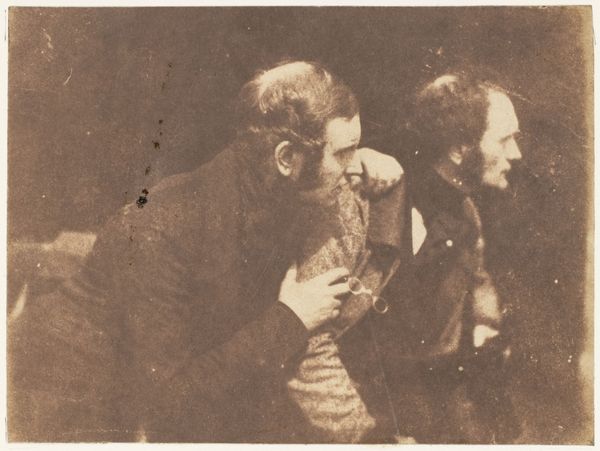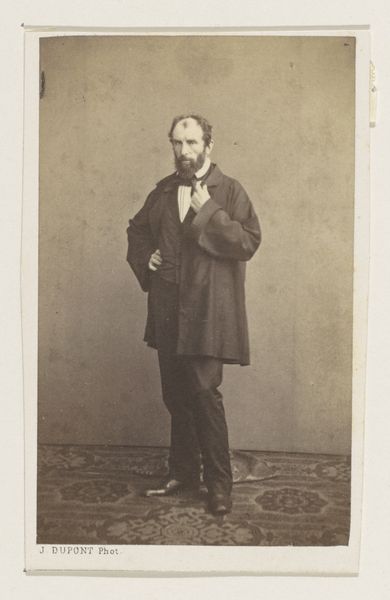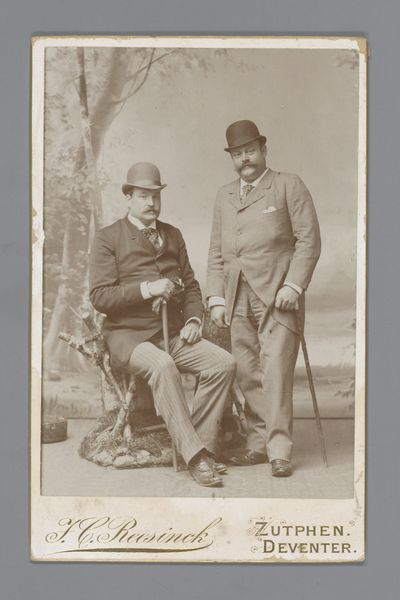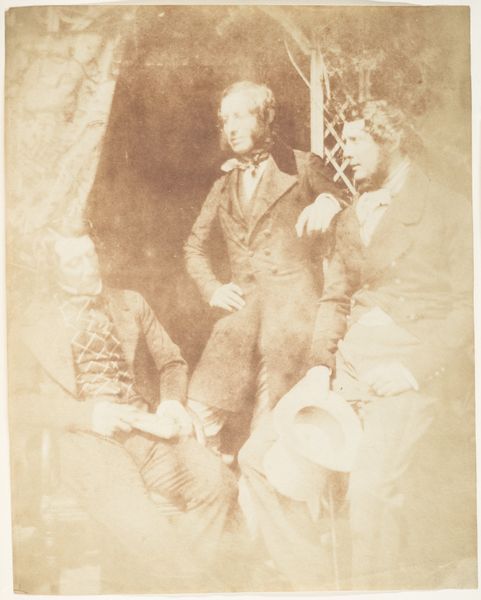![[Two Unidentified Men] by Hill and Adamson](/_next/image?url=https%3A%2F%2Fd2w8kbdekdi1gv.cloudfront.net%2FeyJidWNrZXQiOiAiYXJ0ZXJhLWltYWdlcy1idWNrZXQiLCAia2V5IjogImFydHdvcmtzL2RlZmNlMTUwLWQ0YTQtNGRmOS1iNDU5LThmM2ExNjQyMzVjYy9kZWZjZTE1MC1kNGE0LTRkZjktYjQ1OS04ZjNhMTY0MjM1Y2NfZnVsbC5qcGciLCAiZWRpdHMiOiB7InJlc2l6ZSI6IHsid2lkdGgiOiAxOTIwLCAiaGVpZ2h0IjogMTkyMCwgImZpdCI6ICJpbnNpZGUifX19&w=3840&q=75)
photography, gelatin-silver-print
#
portrait
#
photography
#
group-portraits
#
romanticism
#
gelatin-silver-print
Copyright: Public Domain
Editor: So, this gelatin silver print by Hill and Adamson, called '[Two Unidentified Men],' made sometime between 1843 and 1847... it feels so austere. The tonal range is quite limited and gives a somewhat melancholic atmosphere. What do you see in this piece? Curator: I see more than just a melancholic portrait; I see a document steeped in the complexities of early photographic representation and its impact on social hierarchies. How do these men position themselves within a rapidly changing world, facing evolving social norms and power dynamics reflected by their conscious decision to be photographed? Editor: Conscious decision? In what way? Curator: Consider the act of commissioning a photograph in the 1840s. It wasn't like snapping a quick selfie. It involved expense, time, and a deliberate engagement with the process. Their choice of clothing, posture, even the fact that they are together—all these elements tell a story. It makes you wonder what the societal pressures were like for portraiture at the time, and how their identities were negotiated in relation to gender, class, and community standards. Who had the agency to have portraits commissioned? Who didn't, and why? Editor: So you’re saying their decision to be photographed wasn’t merely about documentation, but a negotiation of identity within a social structure. Curator: Exactly. Early photography democratized image production to some degree, while also replicating existing inequalities. Hill and Adamson's work exists at this fascinating intersection, highlighting who was given visibility, and what statements these carefully constructed images were meant to convey to the audiences of the time. Editor: I’m not sure I would have thought about that… that their portrait itself might be a statement, reflecting an exercise of agency. Curator: It's easy to forget the political dimensions inherent in any visual representation, particularly in its nascent stages. We need to examine photography through a critical lens, analyzing power, privilege, and the act of representation itself. Editor: Thanks; I see this photo so differently now!
Comments
No comments
Be the first to comment and join the conversation on the ultimate creative platform.
